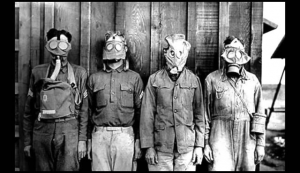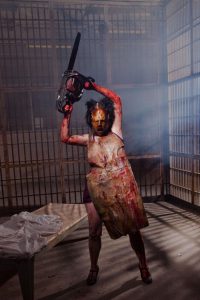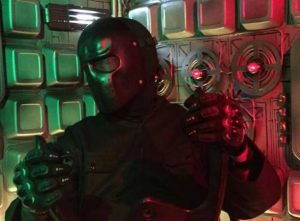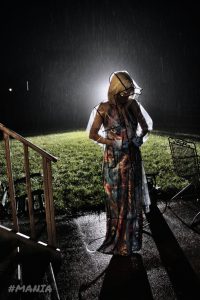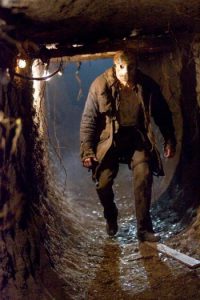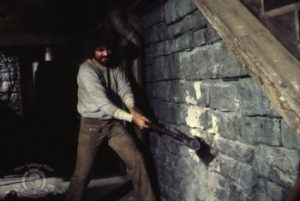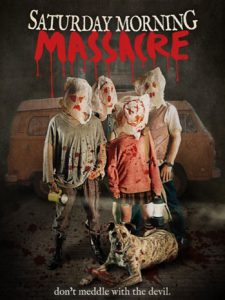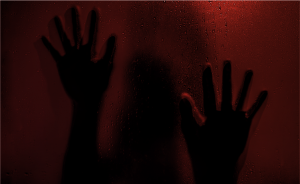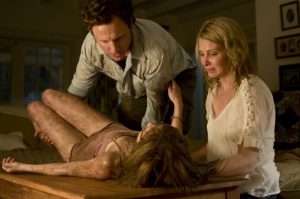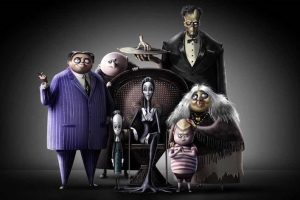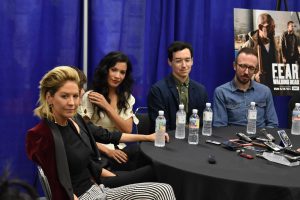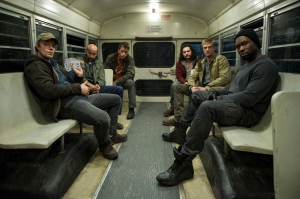
Exclusive Interview with the Filmmakers Behind ‘Solitude’
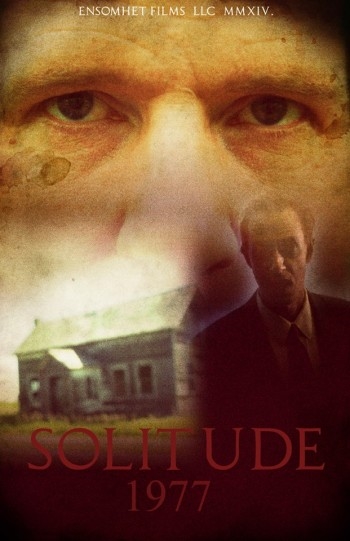 I recently got word of a new horror flick on the horizon from Taylor Scott Olson and Livingston Oden, entitled Solitude. What instantly drew me in was the fact that the film takes place over a span on 75 years, and we get to travel through some iconic times, especially within the horror genre.
I recently got word of a new horror flick on the horizon from Taylor Scott Olson and Livingston Oden, entitled Solitude. What instantly drew me in was the fact that the film takes place over a span on 75 years, and we get to travel through some iconic times, especially within the horror genre.
So, when the opportunity arose I jumped straight at the chance to pick the brains of the guys behind the film, and below you can check out our interview which explores the film and much more.
I’ve been closely following your latest film, Solitude, for a while now, and I have to say it is one of my most anticipated films to check out in the near future due to its uniqueness. But for those new to the party, could you give us some more details regarding the film?
Livingston – The film is basically a nod to horror films over the last 75 years. It takes place in and around a town called Solitude on a piece of property where an evil presence dwells. We wanted to tell this story through flashbacks, which will show what’s transpired over the years. What makes this film so unique from others is in these flashbacks; we filmed them as they would have looked in the time frame shown. For example, the thirties flashback looks like a film made in the thirties, like what you would see if you watched classic Universal monster movies of that era.
Taylor – Each segment has a lot of references to films of the time period, although many of them are rather subtle. The way to describe Solitude best is that at it’s core it is a mystery thriller, but it has elements of classic monster horror, supernatural horror, slasher, found footage, and more.
As the film is in segments, and we travel through time at seminal moments, does it play out more like an anthology or is it something more?
Livingston – It very much is an anthology. Solitude is basically five short films, telling a story of the horrors that’s transpired in this quaint town. The sixth story, present day, is one I never add into the count of all the stories because its basically the backbone of the film that pulls all of these short segments together. These stories can stand alone as short films; but we designed it where these short segments flow as one feature, which is what I think makes Solitude so unique.
Taylor – Unlike many other anthologies however, each segment does play into the next, and gives the viewer more information about what is truly going on in the town of Solitude. Each segment shows the characters learning more about the town that is passed down through the generations of the family in the film. One influence that we had coming up with this concept was the Spielberg TV miniseries “Taken” about alien abduction, which takes place over nearly 60 years.
We were also influenced by films such as Creepshow, Tales from the Darkside, Twilight Zone, V.H.S., etc. I have always enjoyed these sort of films that feel very episodic, and the shows that some of them were based on.
Where did the inspiration come from to create a film that travels through time, depicting such time periods and the horror films that were around during those times?
Livingston – We were writing a feature before Solitude ever came into fruition, but that script became so big to where we couldn’t make it with the budget we had in mind. Months past before Taylor came up with the idea of doing six short films that are based in different time periods spanning 75 years. When he told me his idea, I came back with the idea of taking those short films and making them into a feature that flowed as one. It was a joint effort in creating what Solitude is today.
Taylor – My first idea was to have a short film based in the late 1930’s or early 1940’s, and done in a style like the Universal monster films. I had also recently watched a film called “The Lost Skeleton of Cadavra,” which is something of a comedic take on b-movies of that time period, but I wanted to do something that took itself a little more seriously. I also saw several Ti West films at that time, “The House of the Devil” and “The Innkeepers” and really enjoyed how his films had a very 70’s supernatural horror feel to them.
I started throwing the idea around to make a series of short films with the exact same story, but set in different time periods to show the evolution of horror films, Livingston and I talked it through and decided it should be a continuous story with that same feel but have everything connected.
How challenging was it to create each segment to make it look as if it was filmed during that time period?
Livingston – It wasn’t as challenging as I first perceived when writing the script. With the help of Cheri Anderson, our Art Director for Solitude, we had a fairly good experience with creating each time period. A lot of time was spent watching films from each decade and taking notes with what they did both on camera and with the camera itself. If anything, present day was the most challenging in that it had more set design and locations to prepare.
Taylor – We were fortunate to have Cheri Anderson assist with art direction and wardrobe for this film We wanted each segment to have a particular look not just in terms of wardrobe but in terms of color, which adds a lot to the feel. For example, in the 1977 segment we used almost all reds, yellows, and browns. It has a very dead look to it, which really adds to the mood of it, as it is considerably darker in tone than some of the others.
But in the 1986 segment, being that it’s a slasher and not quite as dark, we had the characters wear much brighter colors, blues, pinks, almost neon looking yellow. It wasn’t just art direction we did this way, the effects change throughout as well. The first two segments are black and white, so we used chocolate syrup for blood, which was common for those type of films. The blood in the 1977 segment looks pale, while the 1986 segment blood is a very dark red.
I for one love monster films, and it appears as if a monster/creature plays heavily in the film? Please tell me it is all practical effects where possible?
Livingston – The majority of Solitude is practical effects, I wouldn’t have it any other way. It just brings more to the table when you see it for real than having a computer effect. Any effect created in post production will only be used to enhance the practical effects in the film.
Taylor – I’ve always thought that practical effects look better than most of what can be done in post, especially for the segments that are meant to look like they were made long ago. If you watch both the original Nightmare on Elm Street and the remake, they have the same scene where Freddy Krueger comes through a wall and the wall morphs around him.
The original was incredibly creepy because it was practical and looks way better than the new one, which is clearly CGI. Practical is just scarier in my opinion. We had the incredibly talented Darla Edin doing all the effects for this film, and I was really pleased with how everything turns out. Like Livingston said, any post effects we do will just be touchups to anything we did on set.
I believe that Solitude was your directorial debut for both of you? How did you guys find the process, and is there any advice you could give to any budding filmmakers out there?
Livingston – This was our first feature we directed. When we first went into this we didn’t realize how long the road was going to be, the time and effort it would take, or the sacrifices that it took to create this film. It was all trial and error for our first outing and a lot of learning took place during the process.
For anyone wanting to direct and produce a film, I would tell you this one bit of advice that I think is true for anything you want to accomplish in life; never give up, no matter how hard the task is, no matter what anyone tells you, or how long the road might be. Always stay focused on the goal you set for yourself and don’t let anything deter you from what you want to accomplish.
Taylor – There are a lot of clichés I could give about working hard, etc., but there are days where you literally have to force yourself to do it. It’s not easy at all, and it’s not always fun, but the end result after a long day or week or more of shooting to sit down and look at the footage makes it all worth it. I think a lot of people say they want to be filmmakers but they wait around for someone to give them an opportunity.
You have to make your own, and you sometimes have to spend some of your own money to do it. I know that there are many more talented people than I out there, but they may not have the work ethic, which means more than anything else. I look at Solitude as the most stressful and rewarding thing I have done in my life. (so far!)
Where are you guys currently on the film and when do you think we will be able to check it out?
Livingston – Right now the film is currently being edited together, with the goal of having it completed at the beginning of August. We then plan on having it premiere at a festival in October.
Taylor – October is what we are shooting for, but it’s still somewhat in flux. If we are not satisfied with the film by the end of August, we will take the time it needs to make it the best film that it can be.
What does the future hold for both of you? Do you have any other horror projects on the horizon?
Livingston – Currently we’re working on several ideas, a couple horror based and a few that are not. We’re still weighing our options at this point, but I think when Solitude is released I would really like to tackle another film. But as for what kind of film we would like to do is still being considered.
Taylor – It’s a weird feeling knowing that someone else is editing Solitude and we almost just sit back and give him notes here and there, but we are fortunate to have Jeremy Wanek work on it, he edited a feature I was 1st AC on several years ago and I know he will do a good job. While I’m waiting for that, I’m busy working and I do a lot of writing.
I’m working on writing a horror comedy web-series right now, and have several more feature ideas that I’ve been slowly working on. Right now my main focus is watching as many horror films as I can, I’ve been taking notes and giving them to the editor, whether they be something substantial or something smaller.
Taylor – Thanks for your time with this interview! If anyone is interested in checking out more about Solitude, our Facebook page is www.facebook.com/solitudefeaturefilm. We have a ton of behind the scenes pictures from the shoot there, and will be updating it as the editing process goes on, and where you might be able to see Solitude once we are finished.
It was an absolute pleasure of mine to get to know more about the film and the creation process and now I’m even more stoked for this sucker! Long live the indies and I wish Taylor and Livingston all the best with Solitude, and their bright future within the genre.
Let us know if you’ll be keeping this one on your radar?



